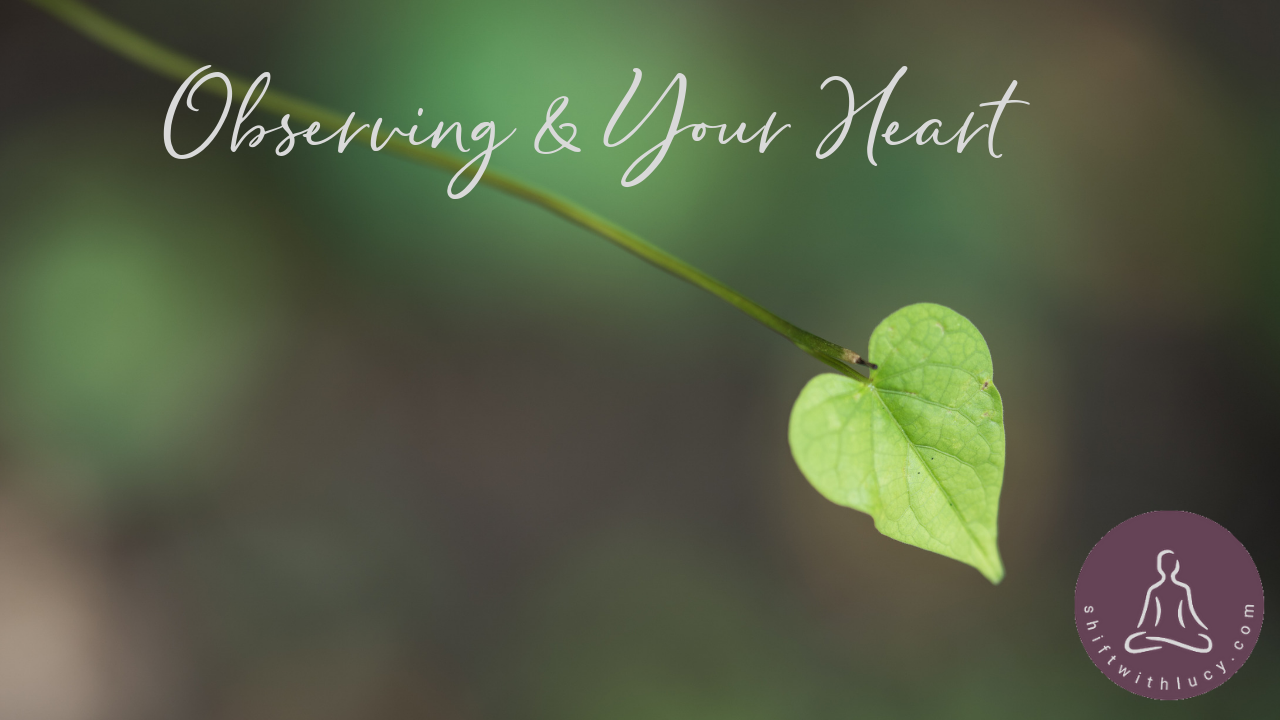Observing and Your Heart

Years ago I was visiting a working historical farm in Ohio. Roosters and hens were running around everywhere and a little boy was watching them with his mom.
"Look at all those chickens! How many colors do you see on them?" The mom asked.
"Those are roosters," her son corrected.
"Well, no honey, not really," the mom countered. "All of them are chickens. The girls are hens and the boys are roosters."
"Well, that's a rooster. And that's a rooster." The little boy pointed directly at the roosters.

"Yes! You're right! Now, how many different colors are on the rooster?"
This questions and answers continued. The "corrects" and "incorrects" were dispersed.
This experience stuck with me. It reminded me of how much of our lives are spent analyzing, comparing, evaluating. So many of our conversations and experiences are seen through our ability to analyze. Many of us have jobs that support our lives that are rooted in being able to examine and label what is around us.
It is important. L...
4 Ways to Ignite Your Spark to a Flame of Energy

So, it's been a crazy busy time. You're feeling spent, energyless and ready to fizzle. And yet, you're expected to push through more.
We've all allowed ourselves to be pushed to the place where we feel completely done.
That's where the power of Peng comes in.
Never heard of it? Peng is the name of an energy in Taiji and Qigong practice that is spoken of in terms of self-defense, but it's such a limited way of looking at it and using it. Peng maintains the pffhtt of a spark and sets the flame.
We cultivate it with the breath and with mindful intention.
Peng is outward expanding energy
So, let's start.
Peng, in very simple martial arts terms, helps us bounce away an opponent.
But, if we were to expand out and notice how this energy can apply in our lives, it's fascinating and much more applicable to life.
For instance, when we only have a spark of energy it can show up as follows:
- Not wanting to get out of bed
- Needing caffeine to keep going during the day
- Reacting ...
C'mon, What's Holding You Up?

Most people have the idea in their heads that we are held upright by the bones in our structure. But without fascial tissue (fibrous connective tissue that holds structures of the body together) we'd be a helpless bone-filled heap on the floor.
Hard to do laundry that way.
We are supported, bound together, and held upright by the tensile strength of fascia. So it's probably a good thing to take care of it.
Caring for and strengthening the net of tissue that connects so much of our body is just starting to become a clear and important part of physical training. Practices like tai chi, yoga, qigong, pilates, massage therapy, bodywork are all great practices for creating a strong system of connective tissue in the body. Bottom line: it prevents injury by increasing elasticity in the fascial body network.
So many injuries are the result of putting too much demand on tissue that isn't prepared for it. Luckily, connective tissue is amazingly adaptable, we're finding out. It changes quic...

